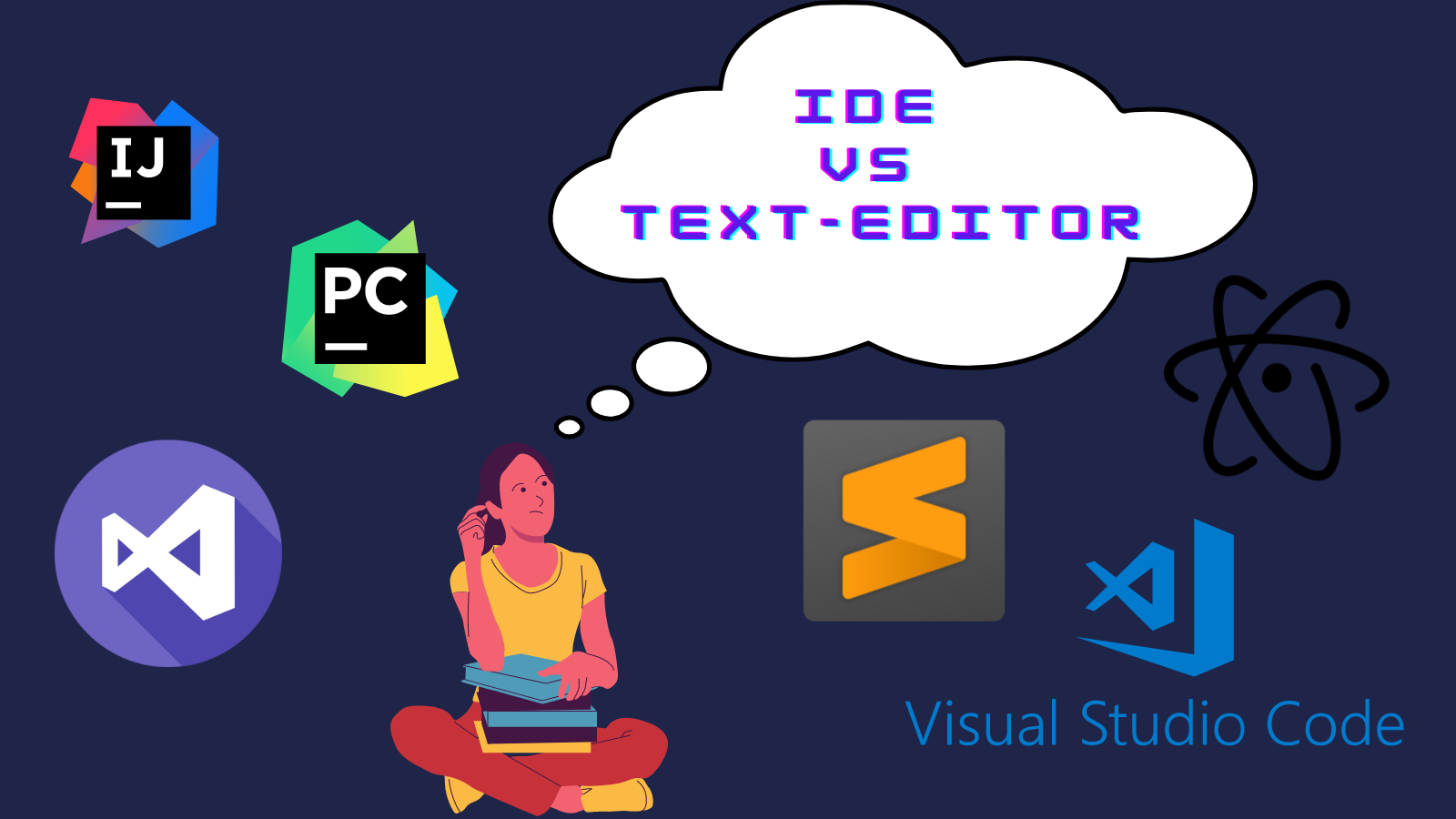IDE or Text-Editor?
 Shahid Hussain
Shahid Hussain
Start this article with a motivation:-
"Every master was once a beginner. And every pro began as an amateur."
- Robin Sharma
The most curious question for every beginner programmer is what is an IDE or a Text-Editor? When I started my coding journey, I used to watch a lot of videos and playlists about programming stuff. In these videos, people used to have different kinds of software to run programming languages. The very first software I installed was Anaconda Navigator to run the Python program. I hadn't even heard about the Text-Editor or IDE up till that time. As I grew and dived more into the tech world, I got to know about IDEs and Text-Editors.
In this article, we are going to learn about IDE and Text-Editor and how these are different.
Integrated Development Environment (IDE):
An IDE (Integrated Development Environment) is a software application that provides comprehensive facilities to computer programmers for software development. An IDE typically consists of a source code editor, build automation tools, and a debugger. IDEs are designed to maximize developers' productivity by providing them with all the tools they need in one place.
Examples of popular IDEs include:
Eclipse: An open-source IDE that supports a wide range of programming languages, including Java, C++, and Python.
Visual Studio: A Microsoft-owned IDE that supports a wide range of programming languages, including C#, C++, and Python.
Xcode: An IDE developed by Apple for macOS and iOS development, supports languages such as Swift and Objective-C.
IntelliJ IDEA: A Java-based IDE that also supports other languages such as Kotlin, Scala, and JavaScript.
Android Studio: An IDE developed by Google for Android development, it is based on IntelliJ IDEA, and allows to develop, design, testing and debug android applications.
Text Editor:
A text editor, on the other hand, is a simple program that allows you to create and edit plain text files. Text editors do not have the advanced features of an IDE such as debugging and building automation tools. Text editors are typically used for writing code, but they are not as feature-rich as IDEs. Examples of popular text editors include Sublime Text, Atom, and Notepad++.
Examples of popular text editors include:
Sublime Text: A cross-platform text editor that is popular among developers for its speed and customization options.
Atom: A text editor developed by GitHub that is open-source and customizable.
Notepad++: A text editor for Windows that supports various programming languages and has features such as syntax highlighting and code folding.
Vim: A command-line text editor that is popular among developers for its efficient navigation and editing capabilities.
VS Code: Visual Studio Code, also commonly referred to as VS Code, is a source-code editor made by Microsoft with the Electron Framework, for Windows, Linux, and macOS.
So, who is better?
It is not accurate to say that one is better than the other as both IDEs and text editors have their own strengths and weaknesses and the best choice depends on the developer's specific needs and the type of project they are working on.
IDEs are generally considered to be more powerful and feature-rich than text editors. They provide a wide range of tools for software development, including source code editors, build automation tools, and debuggers. IDEs are ideal for larger projects that require a lot of coordination between different parts of the code and for projects that require debugging and testing. IDEs tend to be more resource-intensive than text editors, which can be an issue if you're working on an older machine or have limited resources.
Text editors, on the other hand, are simpler tools that are designed for editing plain text files. They are often faster and more lightweight than IDEs, which makes them ideal for smaller projects or for developers who prefer a more minimalistic approach. Text editors are also useful for developers who are already familiar with the command line and prefer to work in that environment. They may be less powerful than IDEs but they are more flexible and can be easily integrated with other tools.
In summary, IDEs are better suited for larger projects and for developers who need the advanced features that IDEs provide, while text editors are better suited for smaller projects and for developers who prefer a more minimalistic approach.
Thanks for reading the article...!
Let's connect on Twitter
Subscribe to my newsletter
Read articles from Shahid Hussain directly inside your inbox. Subscribe to the newsletter, and don't miss out.
Written by
